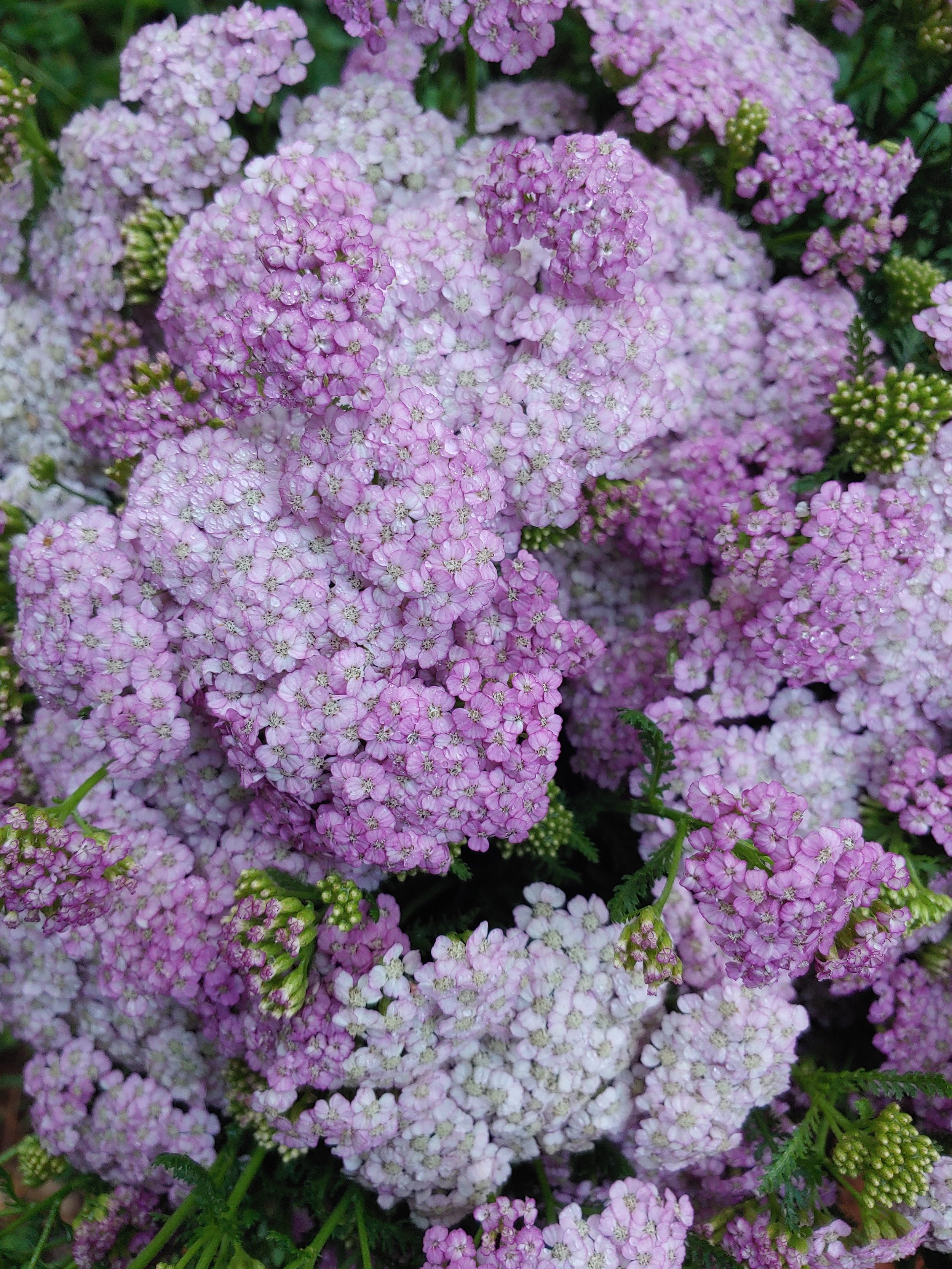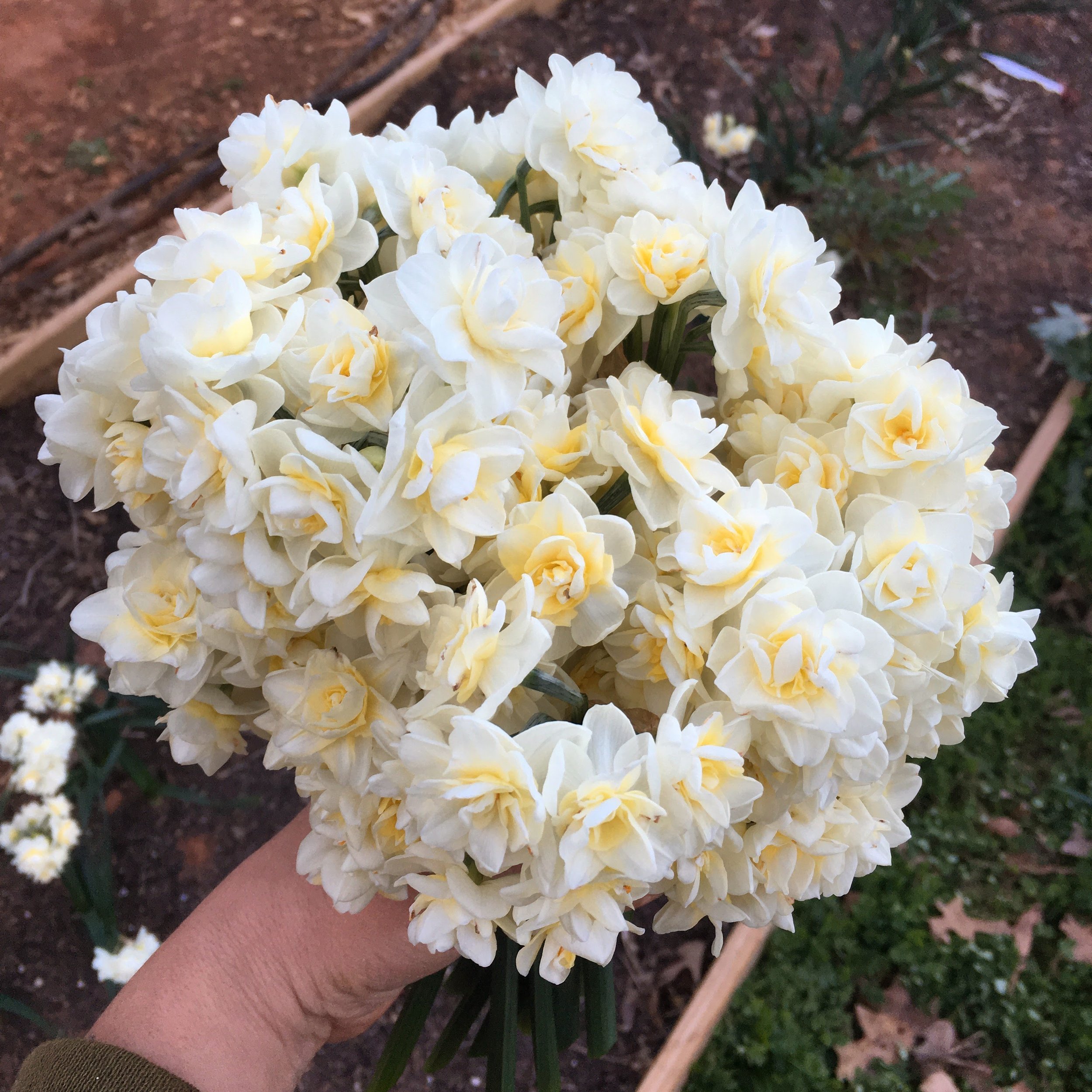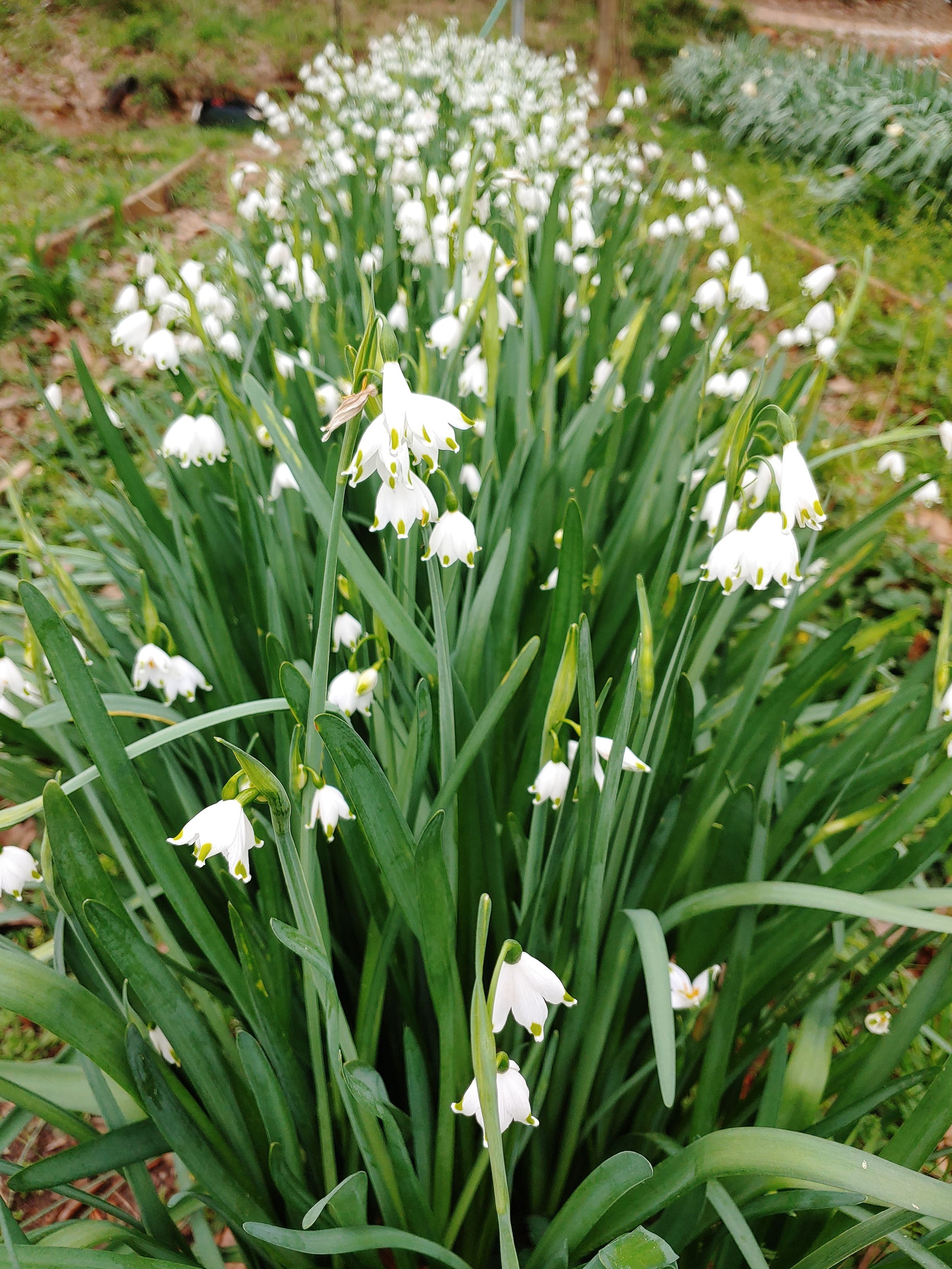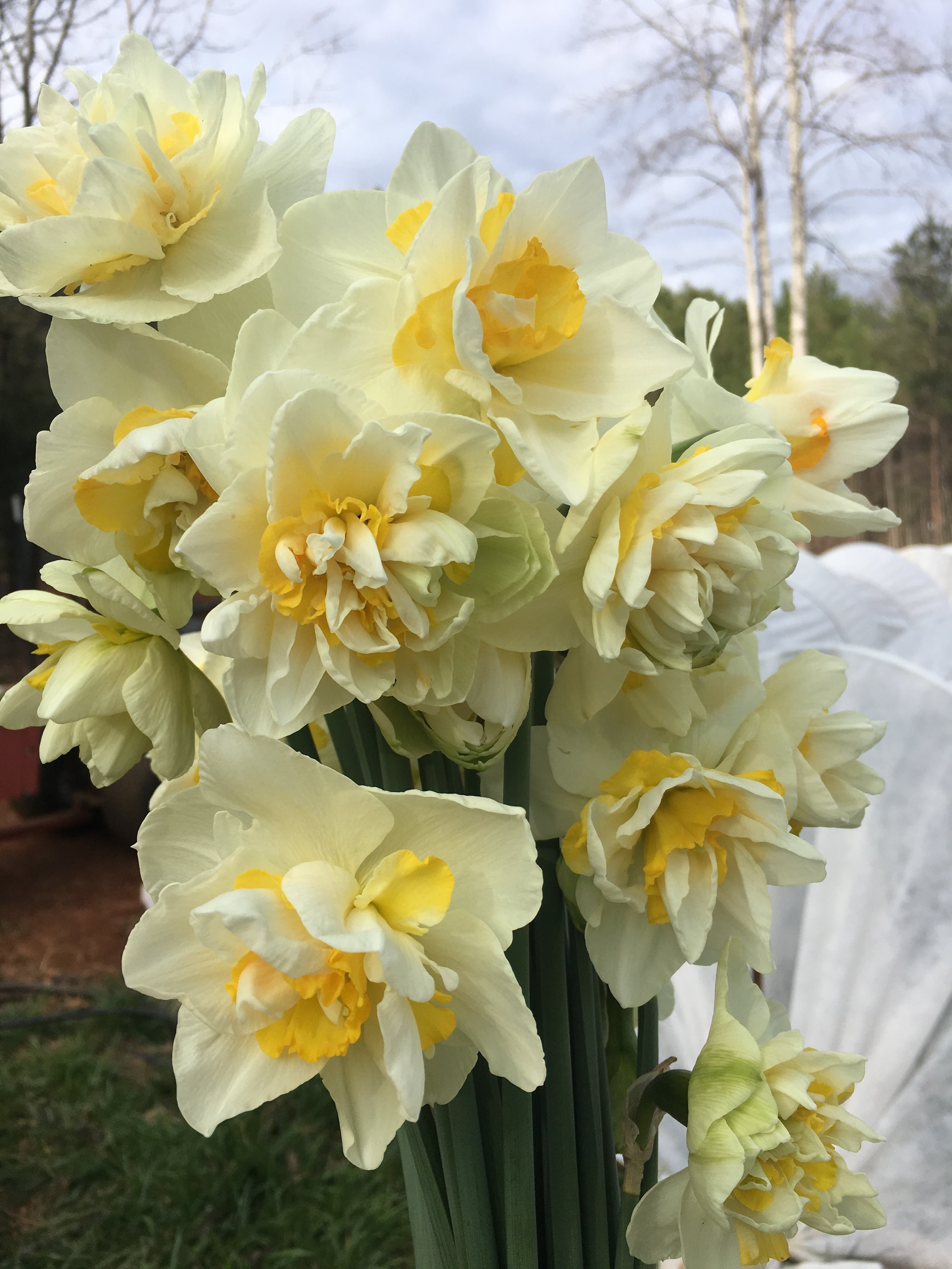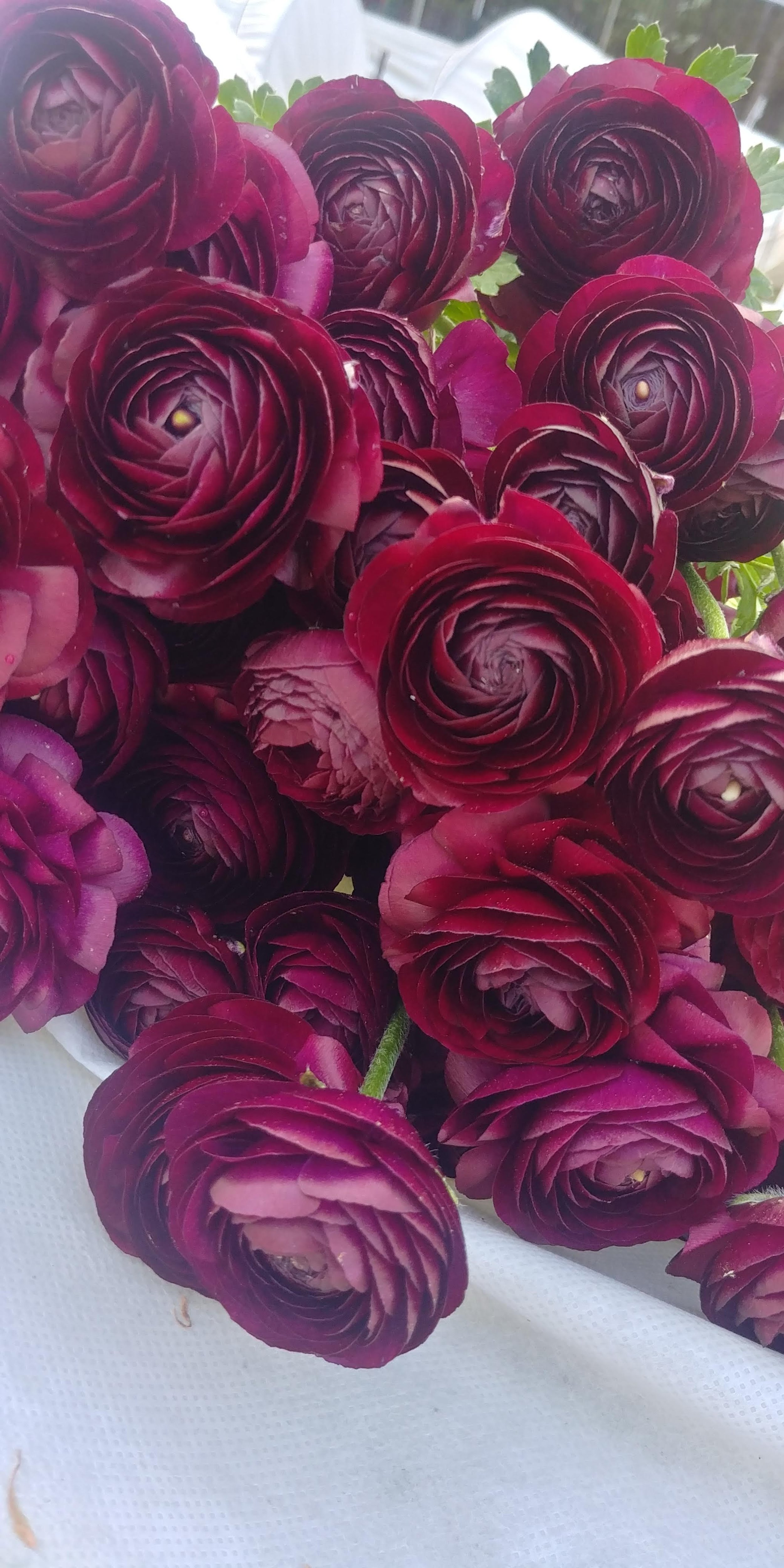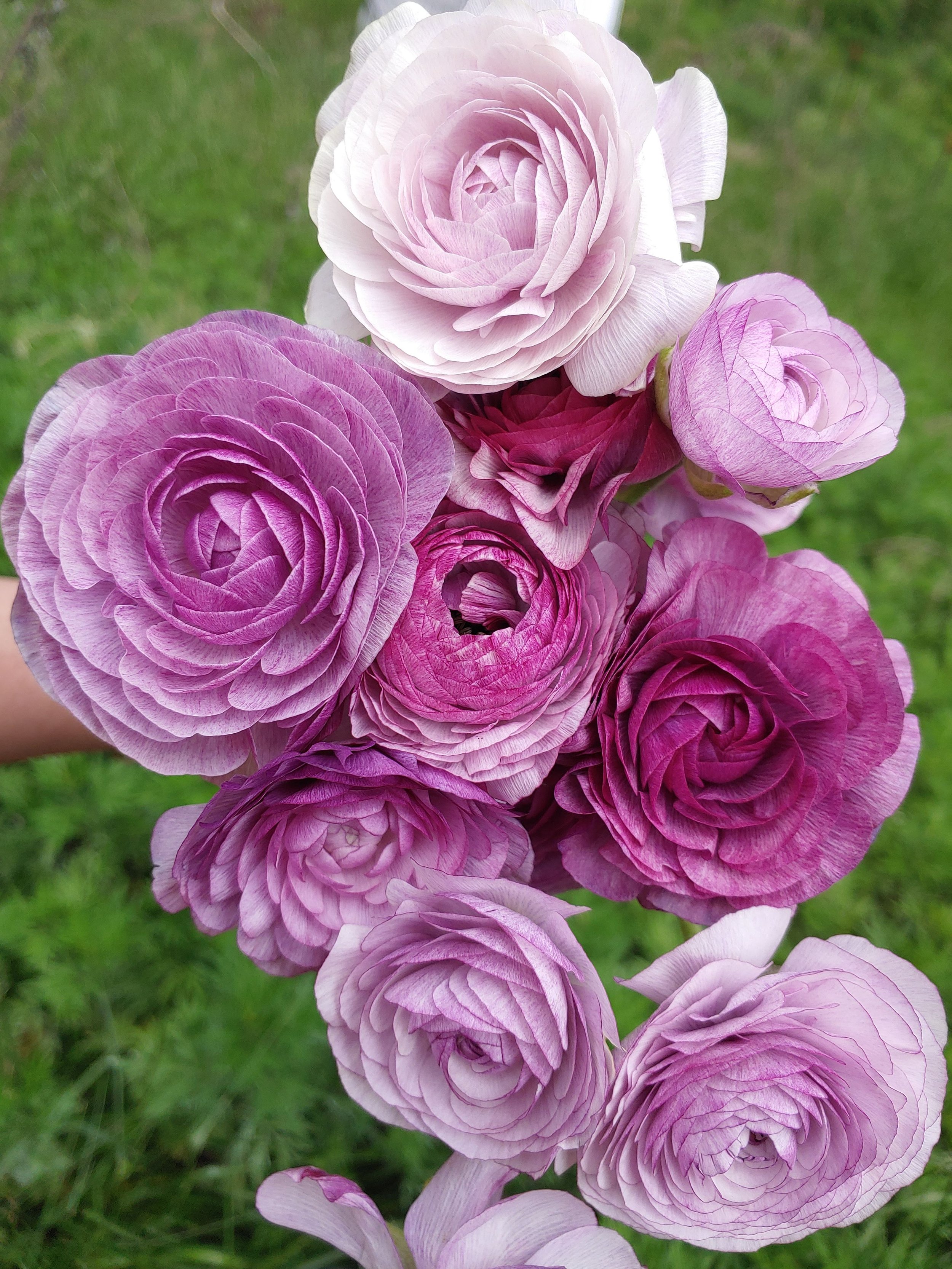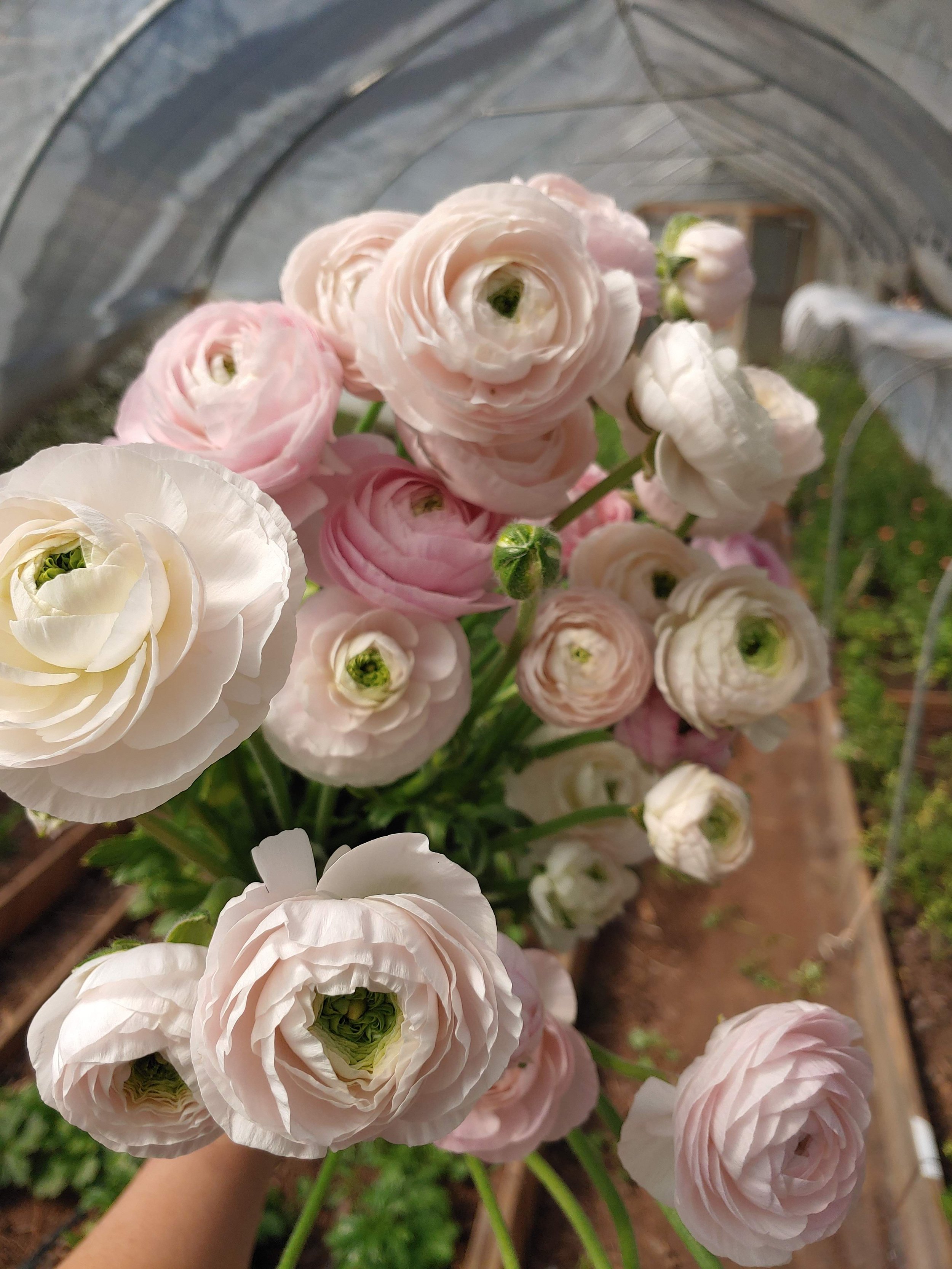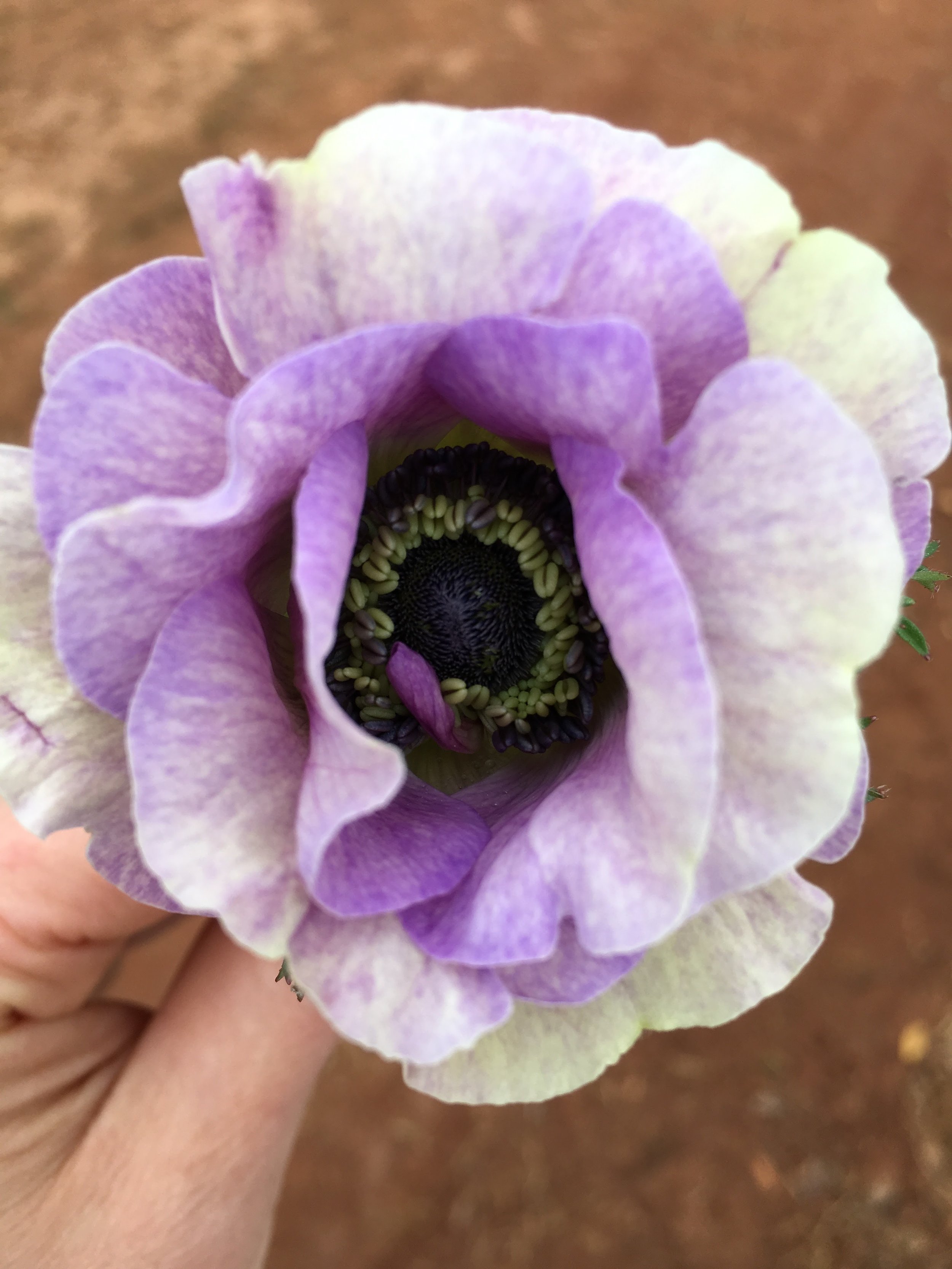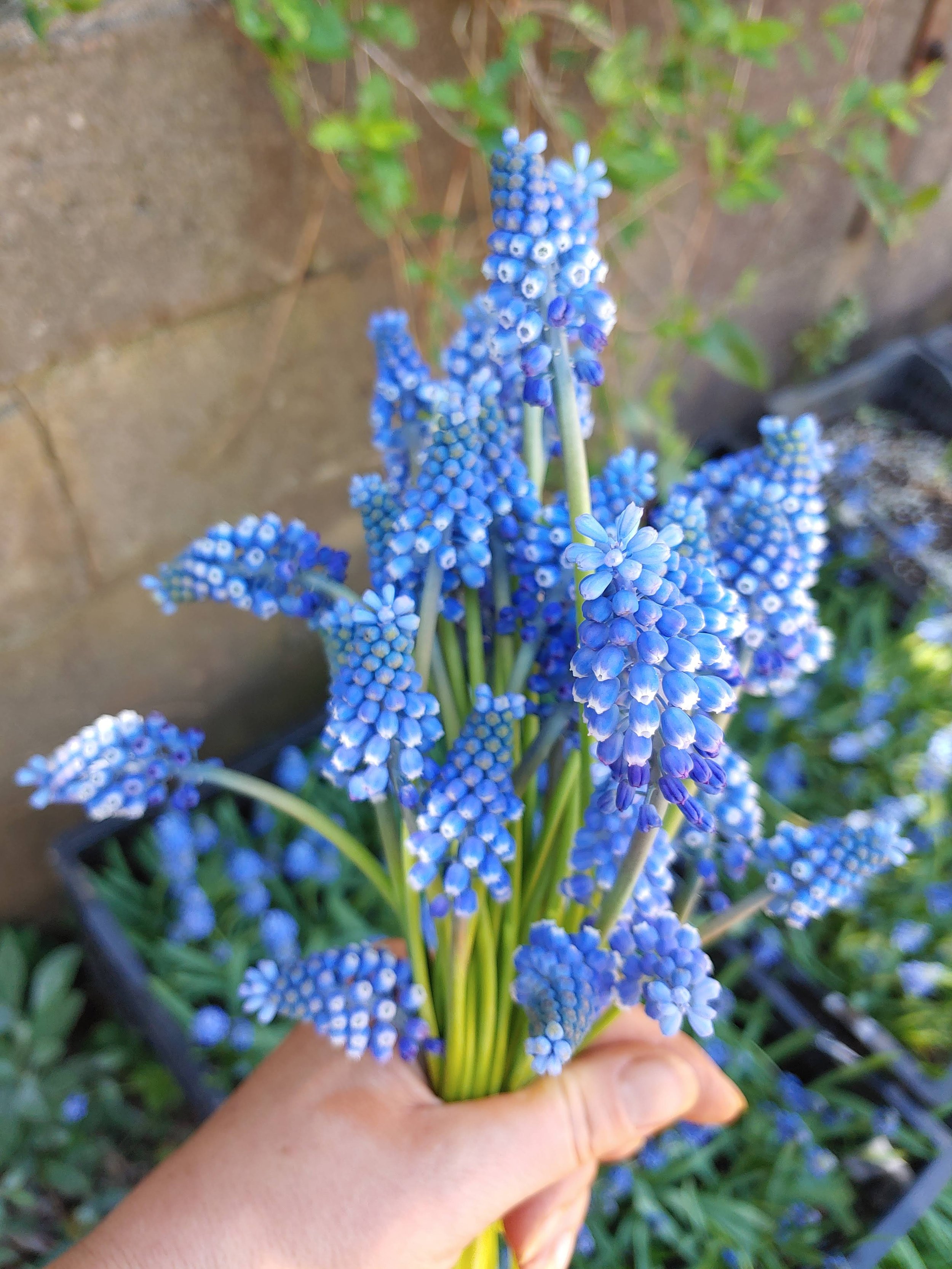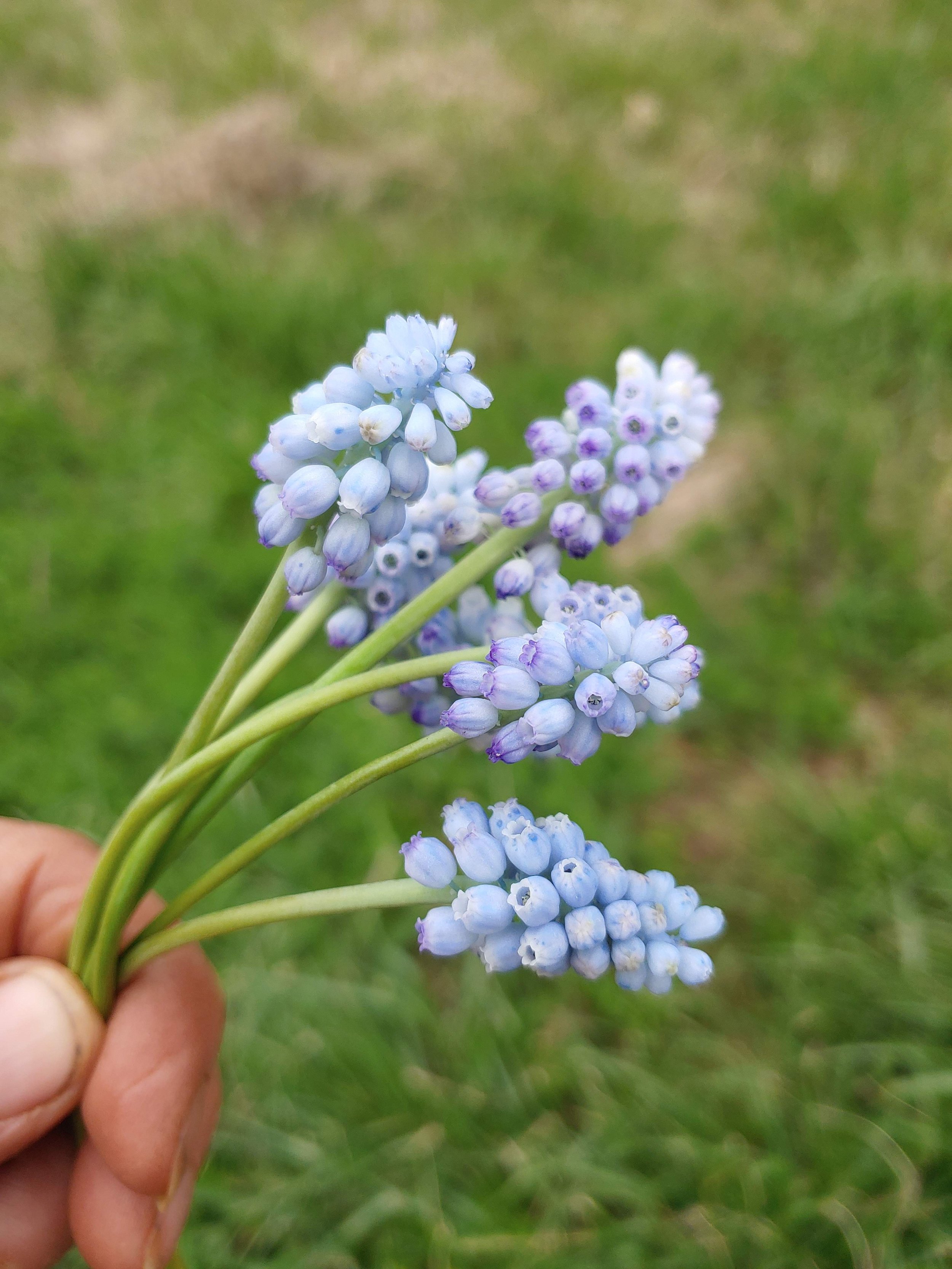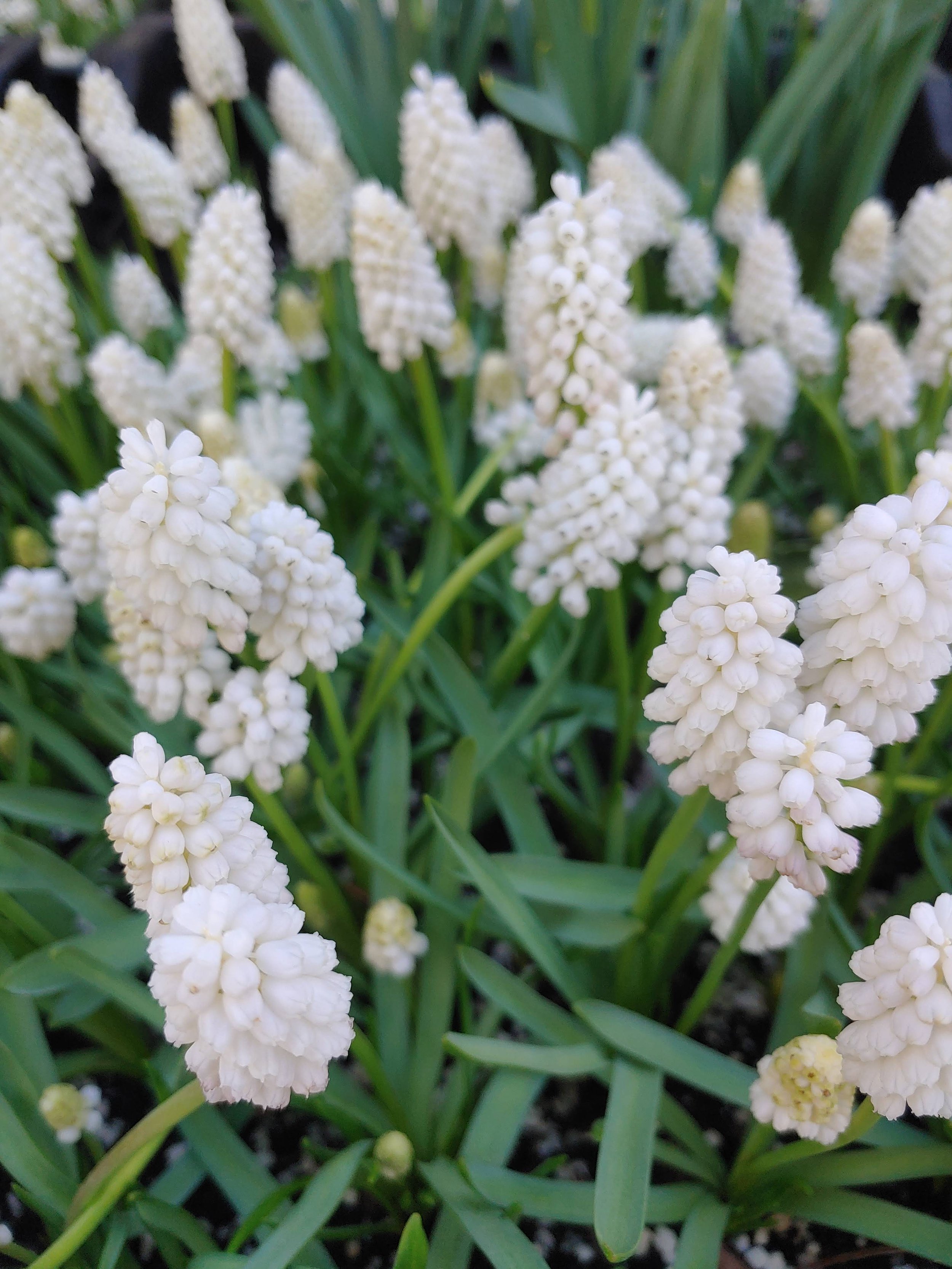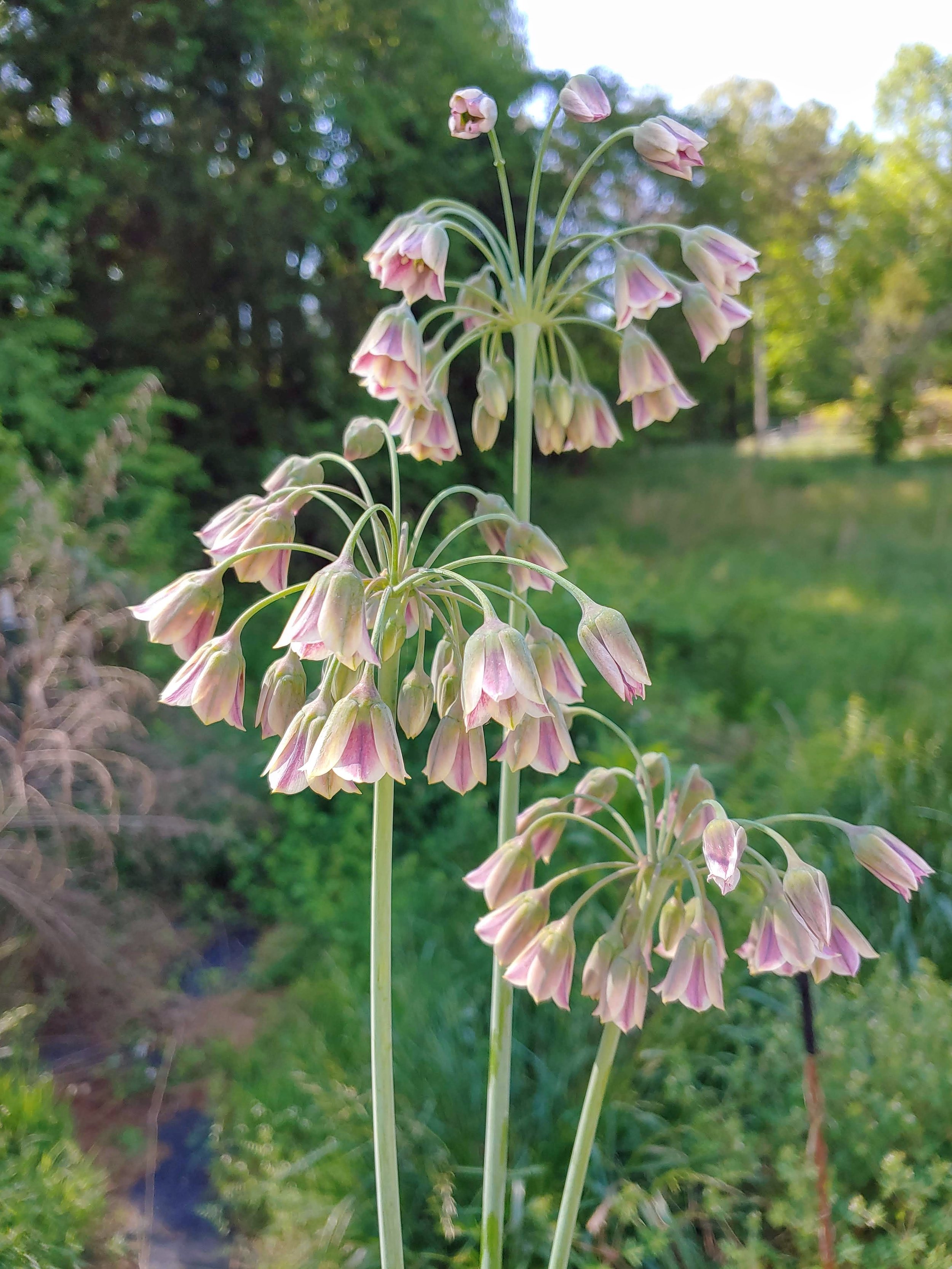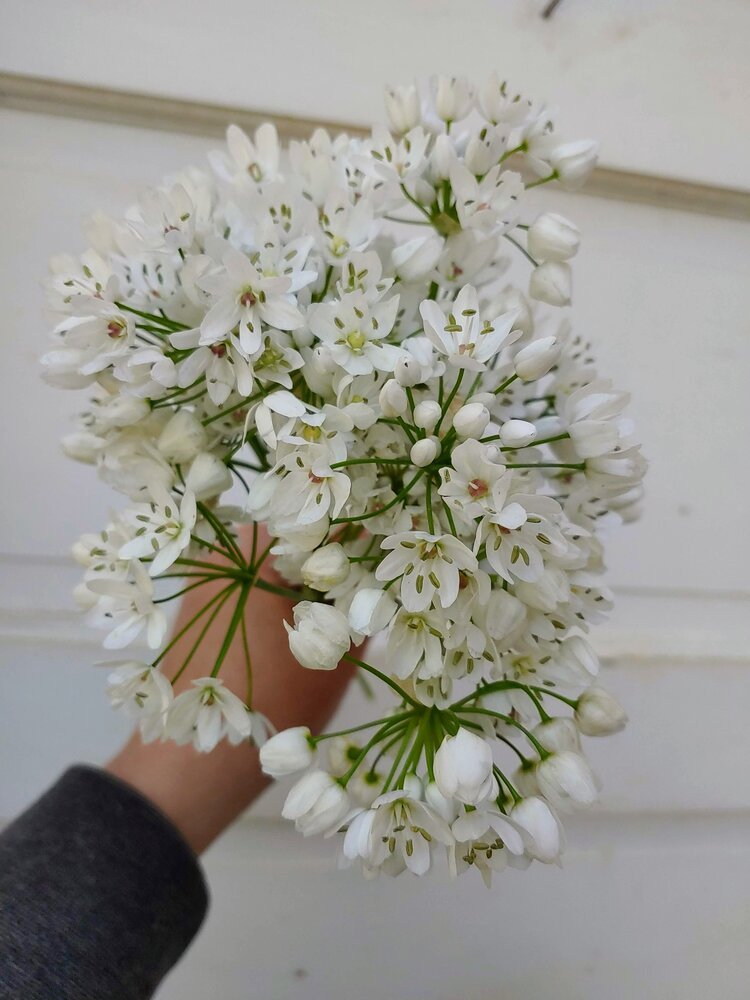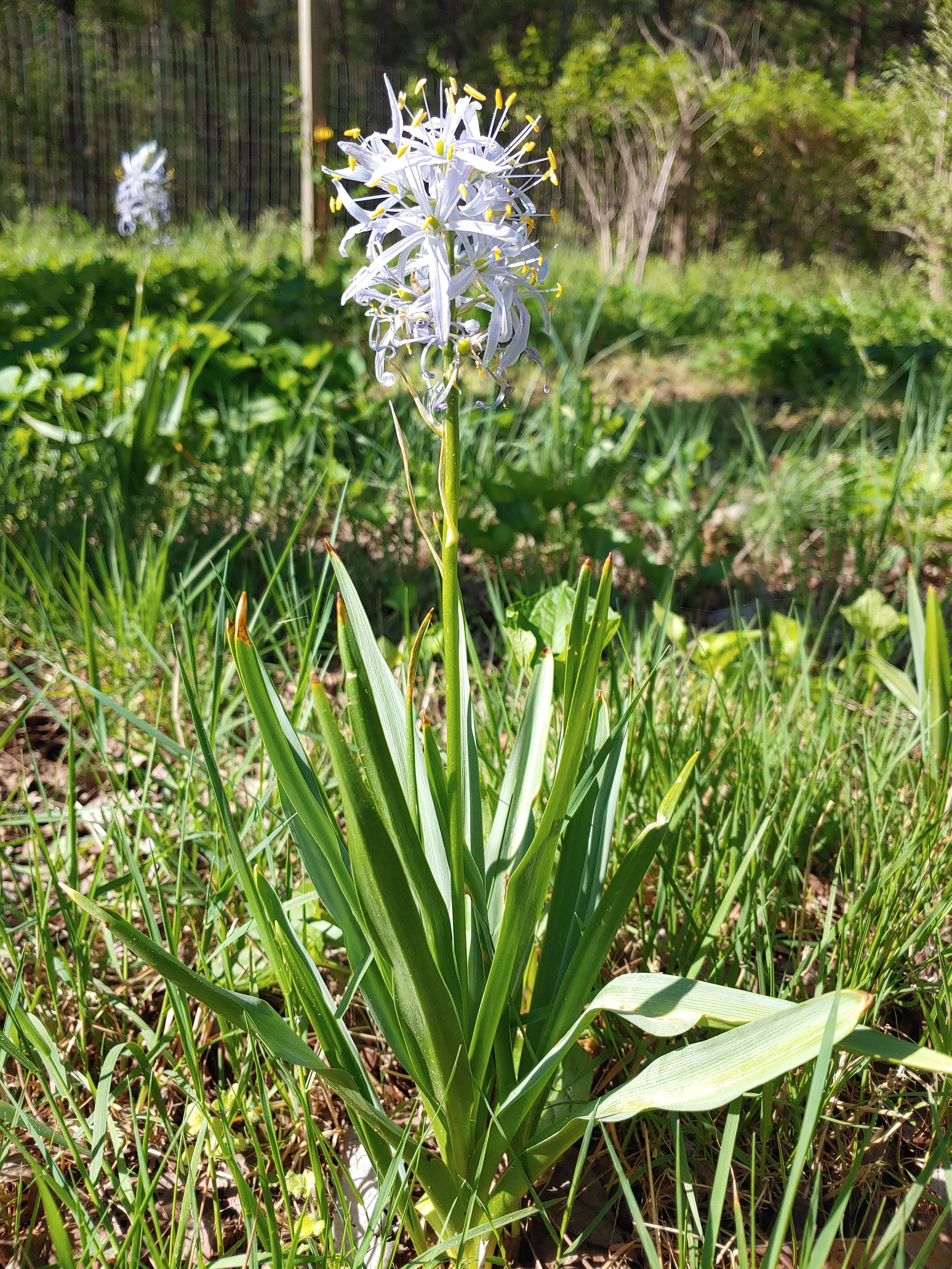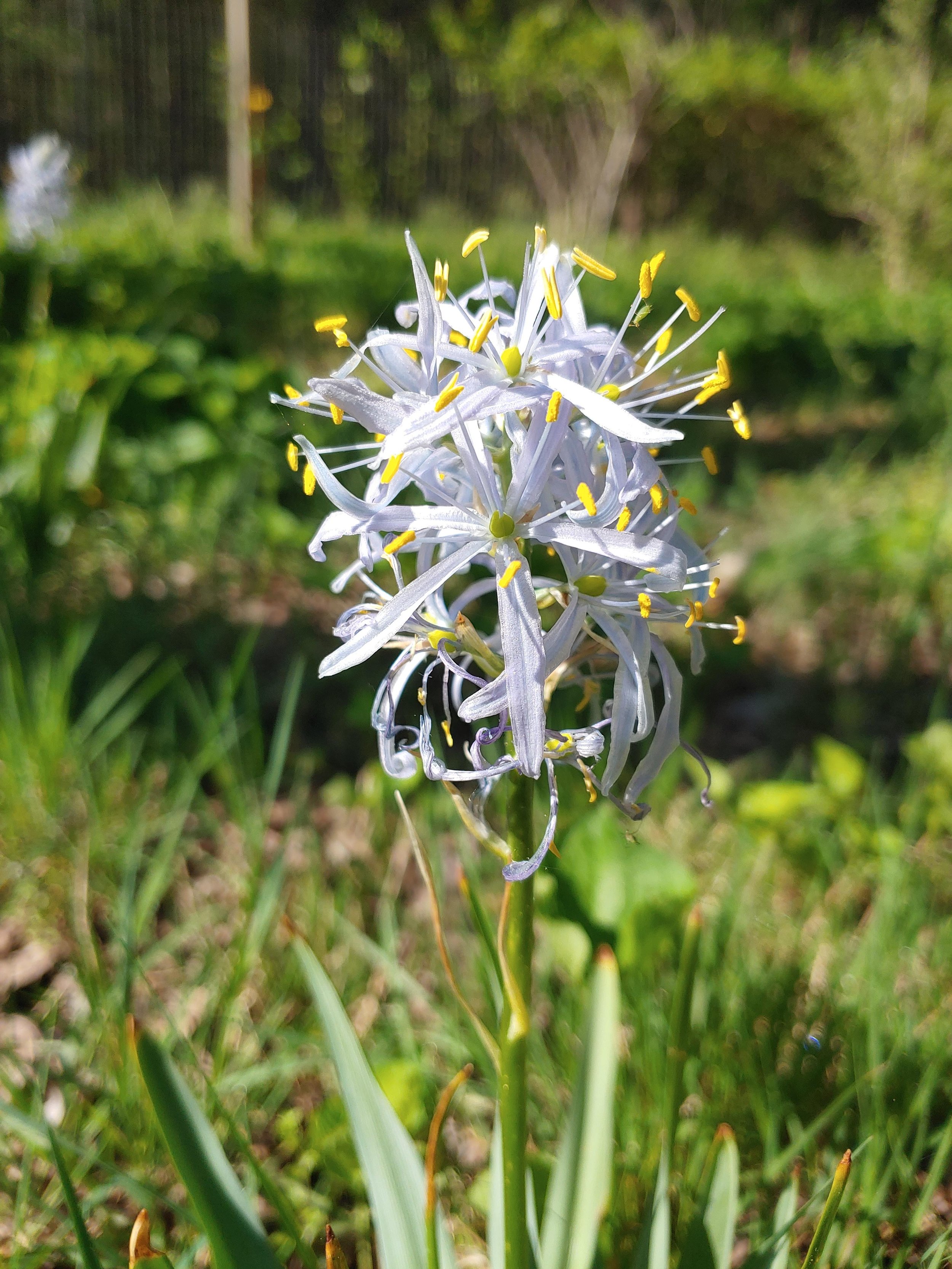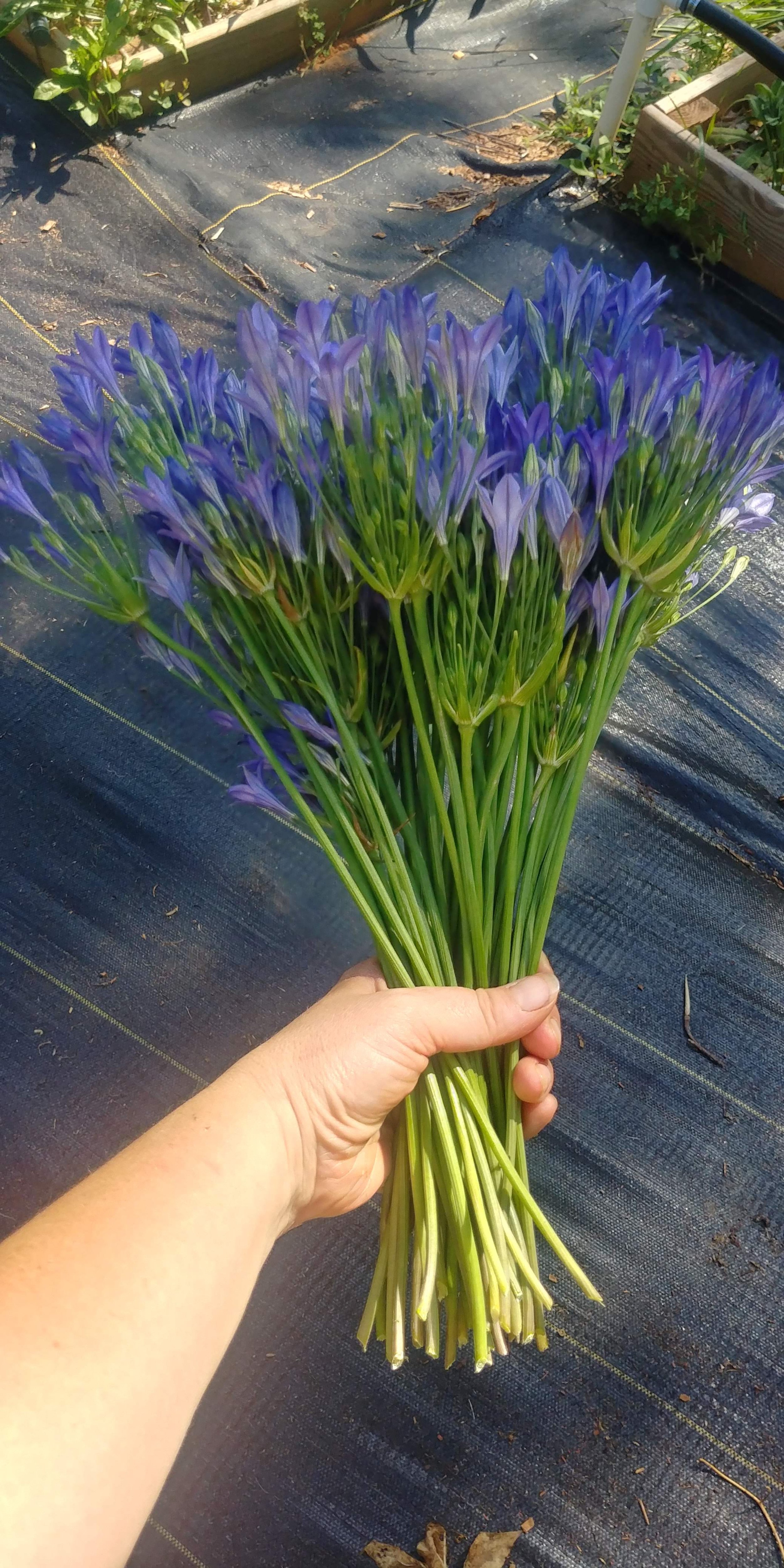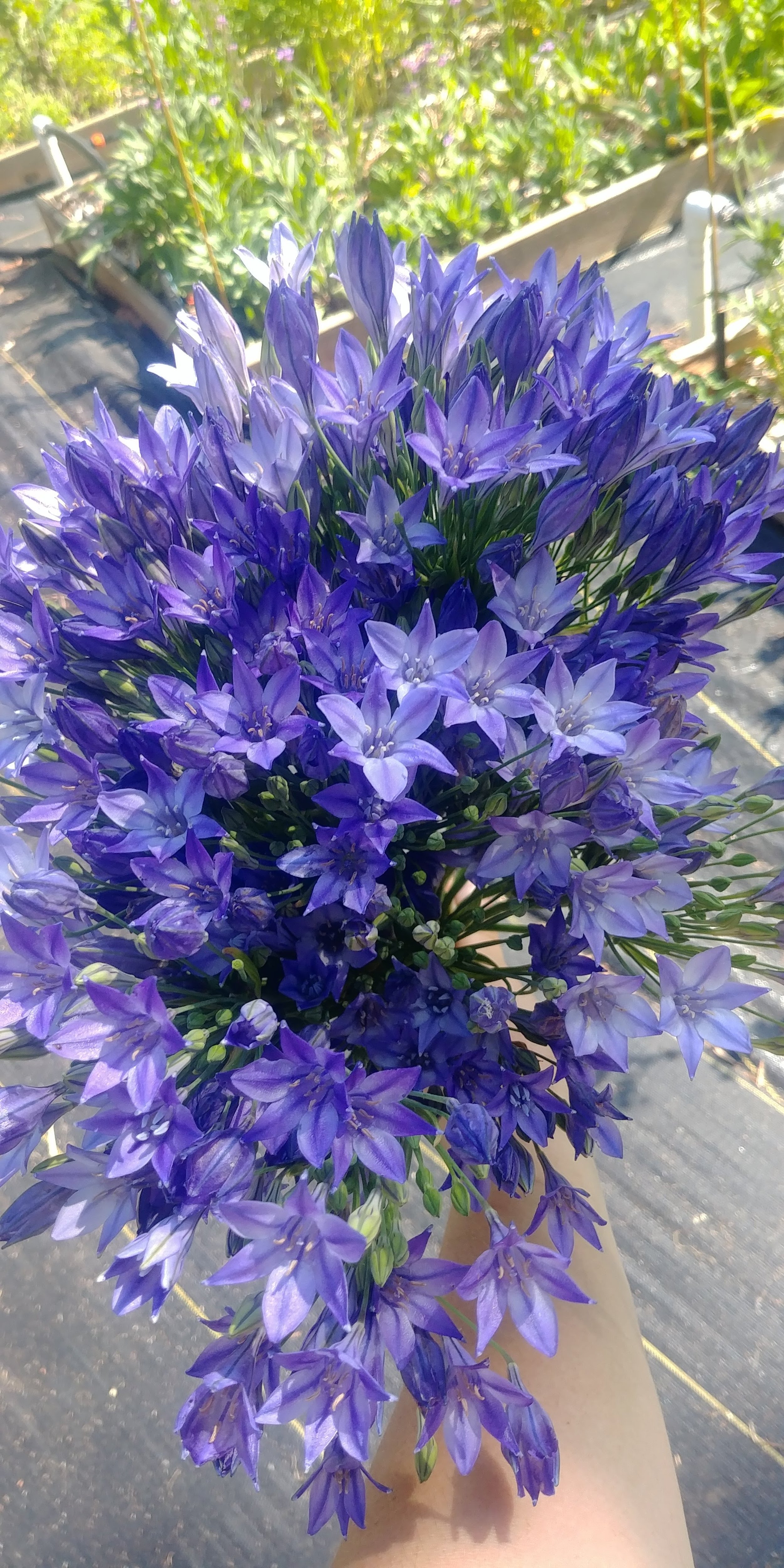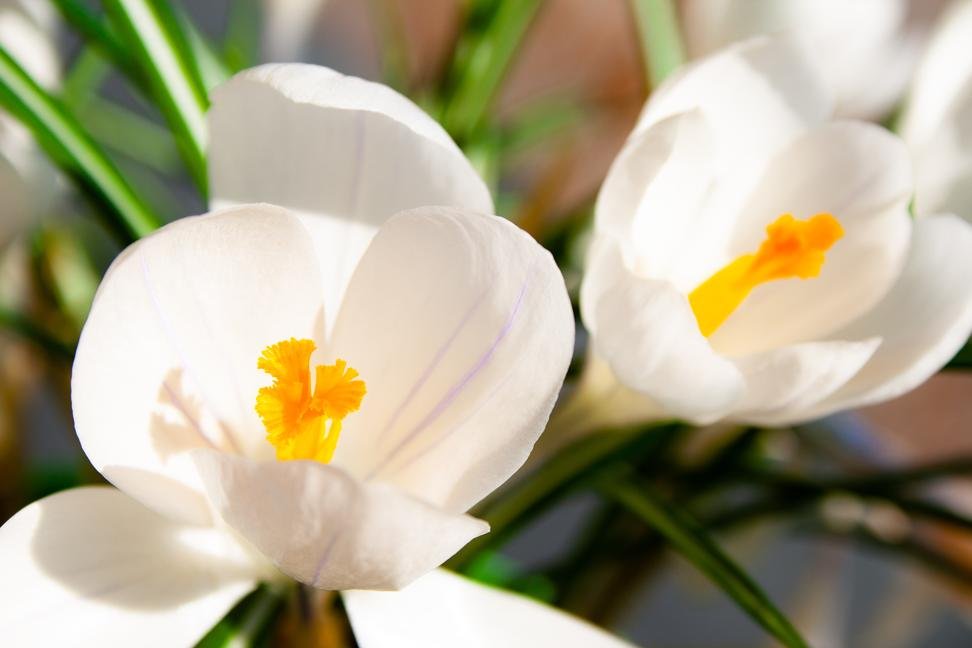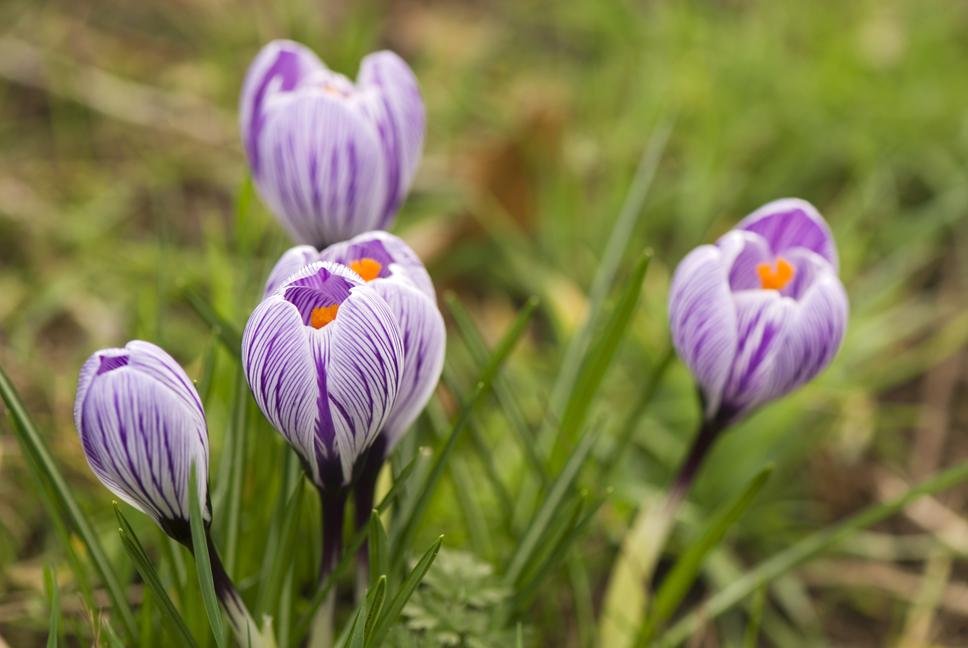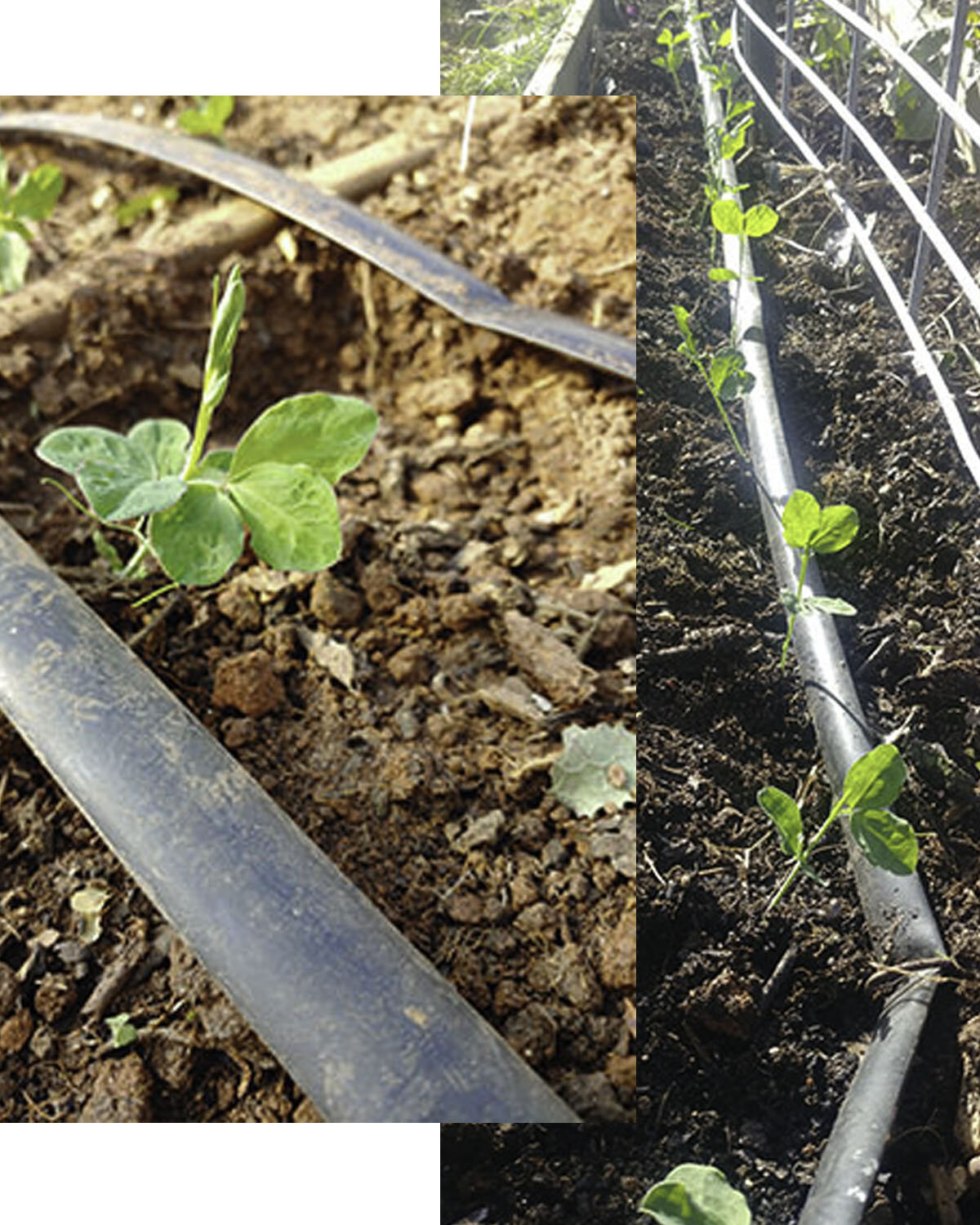
3 Plants Perfect for Natural Pest Control
Every year I try to reduce the need for pesticides on the farm and mimic the ways of nature. And each year, as I spend time observing the natural world I learn a bit more.
But I do find that I keep coming back to these 3 plants, over and over again.
(I’m farming in hot humid zone 7b in South Carolina but these plants have a wide range of hardiness and all of them could be grown as annuals if they won’t perennialize in your zone. )
These first two are for creating beneficial environments. Creating an environment for beneficials to breed is an important step to creating your own natural pest control system.
1. Yarrow- First off- it’s gorgeous and so romantic looking. It makes a fantastic cut flower and blooms in the “awkward gap” -that time when your spring stuff is done but summer blooms aren’t here yet. With an average hardiness zone from 3-9 (always check your individual variety first), yarrow will find a place in most gardens. Drought tolerant and it stays green all winter (at least in warmer climates). Can be easily started from seed or bought as a mature plant. Propagate by divisions every few years to keep it blooming more profusely. What’s not to like?
But why do we care about it for natural pest control?
- Yarrow is a first year flowering perennial so we get the pollinator attracting benefits from the flowers without having to wait. It’s also an umbellifer which means it has loads of small flowers to make up the main flowering head— therefore more sources of pollen unlike lots of flowers with only one center per flowering head. (Also if you use yarrow for cutting, you have to wait until the plant is fairly mature so you’ll still get some pollinator benefit before cutting.)
- Yarrow has a decent amount of plant mass at it’s base and stays evergreen so it makes a great home for overwintering beneficials— ladybugs often lay their eggs in the foliage. It attracts predatory wasps and hoverflies too.
How I’m using it on my farm:
- I have a large row of “cutting” yarrow but I’ve begun adding a plant or two here and there around crops who often have pest problems. Yarrow also comes in short versions- I’m beginning to use these more when I need the plant for pest control because they are very easy to tuck in small spaces.
2. Alyssum or Sweet Alyssum- Alyssum is a low growing plant often used as a ground cover and it has the most delicious golden honey scent when blooming. It comes in loads of beautiful colors- pinks, peaches, yellow, white, purple. Often used as a beautiful multi-colored carpet style planting. Grows in full sun or part shade— does a bit better with a touch of shade in hot weather climates. If you don’t have shade, it may go a bit dormant in hot weather and wait until it cools off to bloom. Easily grown from seed- transplant or direct seed. Self seeds well - doesn’t spread too far but can self perpetuate itself. I’ve had best success with direct seeding in the fall in my climate. Hardiness zone 5-9.
Natural Pest Control Uses—
- the low growing plant habit provides breeding environments for beneficials such as parasitic wasps. These are minute wasps that don’t sting. Alyssum also produces a lot of nectar so will draw in loads of pollinating insects.
How I’m using it on my farm:
- I began planting it underneath my sweet peas. I was looking for an early flowering plant to draw in beneficials to eat the aphids that always show up on my sweet peas. I saw some improvement the first year but discovered I needed more than a few plants. So I now I used it as a carpet beneath vining plants.
- I also use it inside my foliage tunnel. Since the majority of crops in that tunnel are grown for foliage and rarely bloom, I discovered the population of good to bad insects was out of balance. So I began interplanting alyssum to add a flowering element to the tunnel. I’m also adding a short variety of yarrow this year for the same purpose. These should attract more beneficial insects to the foliage tunnel.
Sweet Alyssum growing at the base of Jasmine
3. Garlic Chives- These make a great cut flower and are one of the most dependable later summer perennials. Easy to grow from seed. Will self multiply from self seeding or you can divide after a year or two. I’ve started just keeping a “bank” of these that I divide whenever I need to interplant with a pest prone crop. These have been a longstanding go to on my farm for natural pest control. Hardiness zones 3 to 9.
Natural Pest Control Uses—
-They attract aphids like nothing you’ve seen! Alliums of all types are good for pulling aphids away from your desired plant and onto the allium. However, a lot of alliums produce the green leaf portion of the plant and then go dormant and disappear as soon as flowering happens. Garlic chives stay green all during the frost free part of your season. They will go dormant during the winter in zone 7b and colder.
How I’m using them on my farm:
- I began using Garlic Chives as a trap crop for aphids when I grew roses as a cut flower crop. (But that was years ago). These days, I have them interplanted among my ranunculus to see if they’ll help control the aphids this spring. I also plan to spread them throughout the farm this year- some interplanted among aphid prone crops and some just on the farm edges. They will create more “banks” of natural pest control that I can use as needed.
There are loads of good plants to aid in natural pest control but these are 3 of my favorites and my constant go-to’s! What plants do you use for natural pest control?
What to plant for a succession of Spring Blooming Bulbs
Planting bulbs is probably the easiest way to get a continuous succession of Spring blooms. It’s definitely one of those activities for which I thank myself later!
Over the years, I’ve observed and learned what blooms when and filled in the gaps so that I have a continuous supply of blooms from my bulbs. I grow in South Carolina, Zone 7b so my timing is based on that. If you are warmer, then back the timing up a few weeks to a month. If you are colder then push the timing forward and also realize that you may have some items that bloom more at the same time instead of in a long succession. The milder winters that warmer regions have can cause a longer periods of blooms. Also please keep in mind that yearly weather patterns can accelerate or delay blooms by a matter of several weeks sometimes.
So here’s how I have it planned out in my farm/garden. The season begins in late February to early March with early blooming Narcissus (Earlicheer). Narcissus are divided into early, mid and late types so you can plant all of them and get 6-8 weeks worth of blooms. Earlicheer is the earliest variety I have. White Lion is my next variety to come into bloom followed by Tahiti. Snowdrops bloom about the same time as mid season narcissus which is late March through early April in my area. The snowdrops make a beautiful addition to any narcissus bouquet.
Anemones come in early March most years, sometimes February if we are having a warm winter. Fritillaria Meleagris joins them in mid march. Ranunculus usually begin later March through early April and continue through Mother’s Day.
Muscari will join the bouquet in mid to late March.
Alliums are another bulb that can take you through several weeks. I usually have them in bloom for 4-5 weeks by planting different types. Cowanii is first, then Christophii and Sicilium followed by Unifolium. The super large ones (I don’t grow these) come in mid may from what I can tell. Alliums usually begin in mid April.
Camassia is one of the last to bloom in mid to late May. I always welcome their cute star shaped flowers. They don’t make the greatest cut flower but I like to grow them just for their presence and I love the soft blue color.
Tritellia is another late blooming bulb- late May to early June. It’s just harder to find. I tried to source it for this year’s bulb sale but was unable to get it. But if you can find it, it will complete a 5 month bulb succession. They come in blue, white and pink if you can find it.
Crocus are a new one for me this year. I’m adding them in to begin the flower show even earlier. I think they will beat the narcissus. So my hope is that from February to June, I can have an easy to grow bulb blooming in my garden.
So here’s the cheat sheet: In Bloom order—
1. Crocus
2. Narcissus, Anemones, and Ranunculus
3. Muscari and Fritillaria
4. Alliums
5. Camassia
6. Tritellia
** Most of these will come back year after year. I do plant my anemones and ranunculus as annuals though. You can try treating them as perennials but sometimes they do rot out during the summer. They are a good candidate for digging and storing however. If you are warmer than zone 8, I’d skip the later narcissus and alliums as they require longer cooling periods. It’s possible that even with the earlier varieties they may be more of an annual in a warm climate.
So what are you waiting for? Go make your wishlist from our Fall Bulb Sale! Here’s to a beautiful Spring filled with blooms!!
How to Grow a Beautiful Spring Garden When You Don't Have "Full Sun"
One of the most frequent comments I hear when talking to people about their gardens is - “I don’t have enough sun.” And if you drive around neighborhoods, you’ll see that this is very true, especially in older neighborhoods with established tree cover.
Well, I’m here to tell you— You can grow a spring garden!
Snowdrops - Galanthus Elwesii
Let me introduce you to the concept of “winter sun.” Winter sun is when you have sunlight in an area only in the wintertime. This is due to trees dropping their leaves or the sun hitting at a different angle than it does in the summer time.
In hot climates, winter sun gives us a unique advantage. A lot of spring flowers (especially bulb grown) don’t love heat. If you’ve lived in a southern climate for more than one year, you know that spring weather can be a roller coaster- freezing nights one week and 70+ the next. It’s enough to drive a farmer crazy!
But if you plant in an area that has leaf cover from high trees in the hot months of the year, it’s great for Spring flowers. Through the winter, the bulbs sprout and begin to grow with a little extra sun due to no leaf cover and then as it warms up, the tree leaves sprout and provide a bit of shade for the cooler weather loving plants!
Anemones “Blue”
I use this concept a lot on my farm. I have a hillside that has great drainage and is shaded by a large oak tree. On this hill I have around 200 hellebores. They bloom like crazy in February and March, then in April the tree begins to leaf out and the hellebores have their coveted shade the rest of the year.
This fall I am going to add some biennial (2nd year flowering) foxglove to this area. Foxgloves aren’t an easy perennial in our climate because they hate our heat. So my thought is— why not give them somewhere that has some winter and spring sunshine so they can bloom and then they can spend the summer in the shade!
Muscari- Blue Magic
You can plant ranunculus, anemones, tulips, alliums, crocus, daffodils, muscari, and many other spring blooming beauties in a winter sun area. Full sun is fine too but I love this concept because it opens up so many new possibilities.
Early Spring blooms are the best because their cheerful colorful blossoms are such a welcome sight after the dreariness of winter!
I challenge you to take a look through your yard and find a winter sun location to plant some bulbs this year!
How to Grow Sweet Peas in the South
**Note- This post is geared towards the home gardener growing sweetpeas in a backyard type of setting.
Sweet peas- once you get a whiff, you’ll never be without them in your garden again. Sweet peas in the South aren’t super common. However with the rise of cut flower gardens over the past few years, they are getting more popular. But it’s not all sweet smelling purfume. Growing them in the South requires a few tricks that are different from the common sweet pea knowledge you’ll find on the interwebs.
Let’s start from the beginning: Seeding
Sweet pea seeds look like brown or occasionally white dried peas. They are in the legume family but all parts of the plant are poisonous. Smells only on these! ( They’ve always been fine to grow around my animals- I think you have to ingest quite a quantity to be dangerous but always a helpful thing to know about any plant. )
A lot of sweet pea seed is bred in England and New Zealand. You can import the seeds in small quantities fairly easily or you can buy it from some new breeders that are popping up in the US. Ardelia Farm in Vermont and Sweet Pea Gardens in California are two sources I’ve used with good success. Fresh high quality seed is the most important factor in getting good germination. You’ll see recommendations for soaking or nicking seeds but it’s not necessary. Store your seeds in the freezer once you received them until you are ready to plant.
There are early and late flowering sweet peas. Look for varieties that say they are a spencer type as these are the late types and are better for growing outside. The early types are bred for greenhouse growing and are not as cold tolerant. Some of my favorites are Nimbus, Oban Bay, Mollie Rilstone, Charlie’s Angel, and Strawberry Fields.
It’s best to start sweet pea seeds in containers and plant out a transplant versus direct sowing. Sweet pea seed is not cheap (around 50 cents a seed) and I’ve often seen seed rot or get eaten by rodents when direct seeded. You’ll want to wait until the temps are just right before sowing- daytime temps of average 60’s and nights at 45-55 degrees. So don’t fret if you haven’t started yet, you’ve got plenty of time.
Sow into containers around 2” deep and around 1” in diameter. You don’t need a super big or deep container. NOW—- any northern grower who just read that is saying- “You’re wrong!” Here's one of the instances that Southern growing is different: in the South, we get a small window where we get the correct temps to sow sweet peas. Sow too early and you get leggy plants due to the heat, too late and they don’t get established well before the cold. So the goal is to get the seed started in a controlled environment and have it ready to plant within 3 weeks from sowing. Northern growers will plant into deep pots with lots of room for the transplants to develop as they grow in a very cold environment and then get planted in early spring. I’ve used the sow it and transplant it quickly method for years and it works really well in the South. Fall planting seedlings in the South will give the same slow growth and root development in the ground that Northern growers get in a pot.
Growing out and Planting your seedlings:
Once your seeds have sprouted, keep them in a cool place with bright light. Usually our temps towards the end of October are perfect. I don’t recommend starting sweet peas inside under grow lights because most houses are too warm. Sweet peas like it cool! This is counterintuitive to how most seeds are started but if you keep them too hot, they get too tall too fast and they fall over and break.
Once the seedlings are 4ish inches tall, they should be ready for transplant. You want to make sure they have at least once set of true leaves on them.
Plant into a well composted bed, preferably with the soil raked up to raise it a bit for good drainage. You don’t want to rot them out. Sweet peas are hungry little plants so make sure your bed is well amended with a good organic fertilizer and lots of compost. Space them 6-9” apart. 9” is preferable if you have the room because it will make it easier to harvest come Spring.
Keep the plants watered until established. During the winter, water if the soil becomes dry. Over the winter the plants will begin to branch out from the center and each branch will be around 8-12” long laying on the ground. This is fine for now— Don’t put up your trellis until late February/early March. When you see the plants start to turn upwards and try to climb, then it’s trellis time.
During the winter when it warms a little, 60+ degree days, you can apply a water soluble fertilizer such as fish emulsion.
Sweet peas are very cold hardy. They can take temps down to low 20’s before they need cover. I cover mine once or twice a season and I’m usually playing it safe rather than sorry.
Trellising and Harvesting:
I use a netting called Hortanova Tenax netting. It comes in different widths and the 6’ wide is really good for sweet peas. The vines will grow pretty tall but I never put up a trellis taller than 8’ because I know I couldn’t reach any higher and I don’t want to get out a ladder. Once they start getting tall, you just have to cut harder to control the growth. Use a t-post about every 6’ if growing in a row. Stretch your netting very tight and secure it with zip ties to the t-posts. You can also make a tripod style trellis from bamboo canes or other tough supports. To encourage the sweet peas to grow upwards and not out, I take bailing twine and run it laterally about 3” off the ground and use it to scoop the sweet peas up. Then I add a row about every 6” for the first 2 feet, then 1’ apart after that. I usually stop around 4-5’ because if you add too much after that, it gets hard to harvest.
Sweet peas will begin to grow stems with buds in April usually. They will look droopy at first but will straighten out as they grow. The correct harvest stage is when 2/3 of the buds on a the stem are open. You can cut at the base of the flowering stem or you can cut down the vine if you need a longer stem. To ensure you are getting fresh stems, cut 2-3X per week. The more you cut, the more they flower.
There is a phenomenon called bud blast that can affect sweet peas in the spring. Sweet peas are very sensitive to climate/environmental changes. For example, if the temperatures swing dramatically or we get a ton of rain, it can cause the buds to turn brown and drop off. The buds will reform, usually takes about 2 weeks. I see this happen usually every year. It’s just a fact of growing sweet peas in a climate that fluctuates a lot during the Spring.
Aphids can also be common on sweet pea flowers and they can even show up before flowering begins. So keep an eye out for them. Shower them off with a spray of water or use a insecticidal soap.
Sweet peas have a vase life of about 5 days on average. If it’s a cool spring, then they may last longer in the vase. If it’s hot, then maybe only 3-4 days. Mine usually keep flowering until late May/early June. Keep watering them and harvesting to keep the blooms coming!
But most of all — Enjoy your Sweet Peas! I don’t know of a better flower that is such a treat for the senses- smell, touch, sight!
**Sweet pea transplants still available in the online store.
Fall Planting Q&A
I’ve been getting lots of comments and questions about fall planting. So let’s answer some of those.
Lack of Sunshine: The most common comment I hear from people regarding growing (any type of garden) is that they don’t have enough sun. Lack of sunshine can be a common problem especially if you live in an older neighborhood. I remember removing 13 trees from my first home so I could have a small raised bed garden. But here’s the good news— fall planted annuals don’t require loads of sun! If you have an area where the trees drop their leaves over winter, that’s a perfect spot for fall planting. The plants will get plenty of sunshine all winter and when the tree begins to leaf out in the spring, it will naturally shade your plants and keep those cool weather lovers blooming longer. Fall planted annuals are actually a great little hack for those areas that are a little shady the rest of the year.
Cold Weather: Won’t my plants freeze? Fall planted annuals (often known as Cool Flowers) have some unique properties that other annuals don’t. They can survive quite a dramatic temperature swing. By planting in the fall, you give the plants all winter to build robust root systems that will take off when the weather warms in March and give you blooms way before anybody else on the block. You can be the cool kid who takes bouquets to their neighbors for Easter!
Space: Do I need lots of room? No, most of these plants require only 6” of space away from their neighbor. So you can snuggle them in next to your shrubby perennials or even create a container masterpiece. (See our blog for some ideas).
Bloom time: Spring flowers are fun because you can have a lot of variety in a short span of time. From March thru May, you could easily have over 20+ varieties of flowers blooming. Begin with some anemones and ranunculus and then add several of the other plug varieties and you’ll have 3 months worth of blooms.
Are you intrigued yet? We’ve just announced our Grow Your Own Workshop for Spring Flowers. A few years ago we gave a full fledged on the farm version of this but since times are crazy, we’ve condensed the most important parts into a 2 hour online workshop. We’ve also created a Facebook group for participants to grow together throughout the winter where you can ask questions and show off your blooms. So come join us, Sept 29, 7 pm— sign up on the shop page!
Shop our Fall Plant Sale to get your spring blooms!
